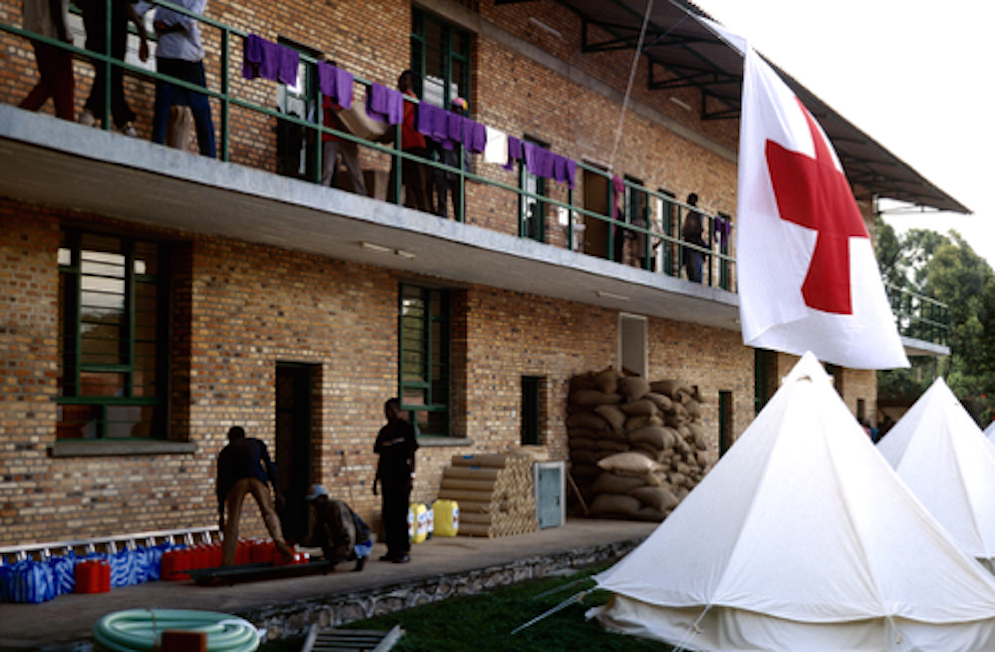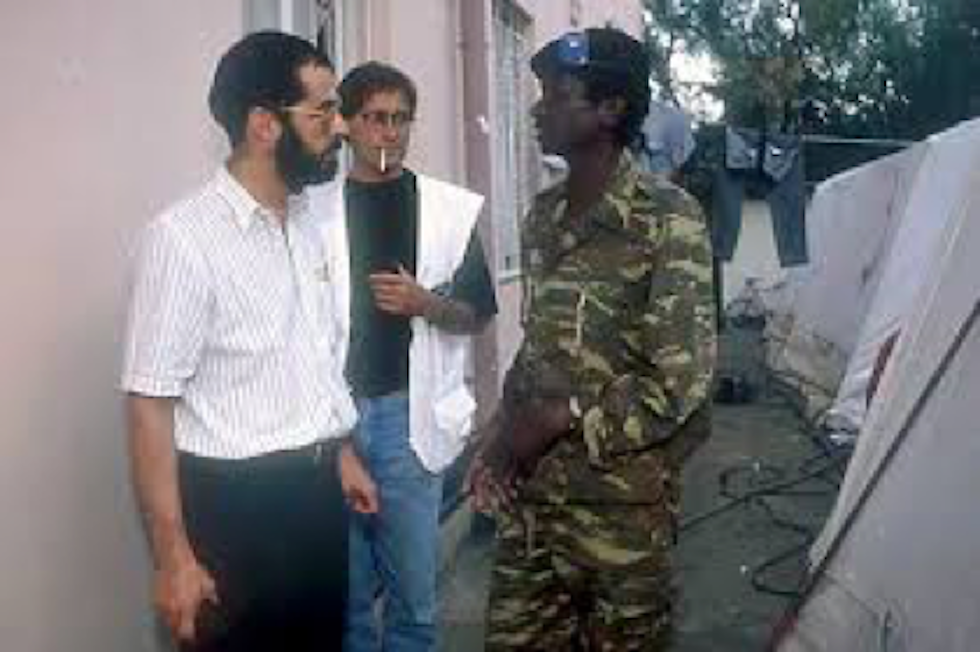Philippe Gaillard
Background to the Crisis
In just 90 days, from April 6 to July 4, 1994, an estimated 800,000 to 1,000,000 Rwandans were massacred in what is now known as the Rwanda Genocide. Decades of discrimination, tension and outbreaks of murderous violence by Hutus against the minority Tutsi population culminated with the entry into Rwanda, beginning in 1990, of a group of mostly Tutsi rebels, the Rwandan Patriotic Front (RPF). The Arusha Peace Accords, a ceasefire and power-sharing agreement signed in Tanzania, led to the deployment of a UN peacekeeping mission; however, on April 6, the shooting down of Rwandan President Juvenal Habyarimana’s plane unleashed an organized massacre of Tutsi and moderate Hutu that would quickly become a genocide.
Map of the RPF advance during the Rwanda Genocide of 1994 (Shaded areas represent RPF control prior to the genocide.)
Additional Information About Rescuer
Philippe Gaillard studied French and German literature, with a special focus on the medieval period. He was not trained as a doctor. Before heading the ICRC delegation in Rwanda, he had worked in or headed ICRC delegations since 1982 in countries all over the world: in several countries in Central and South America, as well as in Croatia, Lebanon and Iraq. He is a “medical” rescuer by virtue of his efforts, as the head of the ICRC delegation, to make it possible for patients and others to be cared for at ICRC facilities and for ICRC doctors and nurses to work in relative safety.
During the first weeks of the genocide, virtually all foreigners left or were evacuated out of Rwanda. For the few who remained, there was, according to Gaillard, one fundamental question:
“What should we do in order to be able to stay?” and the answer was “We have to communicate and we have to communicate first with the killers.” I met them all in the hell of Kigali at that time and this is the way we could start to act in favor of, at the very beginning, wounded people.”
According to Gaillard, the most powerful demonstration he witnessed of the effectiveness of as the ICRC’s policy of neutrality came at the very end of the genocide, in early July:
Just before the RPF took over Kigali, six heavily-armed militiamen came to our hospital. They were drunk, but surprisingly not aggressive at all; they had one prisoner, a young Tutsi lady; they told me: "This woman has been with us for the past three months, she is a nurse, we are about to leave the town, we have decided not to kill her despite the fact that she is a Tutsi, as a nurse she will be more useful in your hospital than dead."
One outcome of Gaillard’s experience was his wife’s and his decision to have children:
When we came back from Rwanda, my wife and I had been married for seven years. We had deliberately had no children. It was so evident for her, for me, that after this experience we both wanted to create life. And it is so beautiful. [My children] will know it, they will discover it, [but] I would never explain to my son that he was a product of a genocide. That's not easy to explain.
Timeline
1965 Born in Valais, Switerzland
1982 Begins working for the ICRC
1993 (July) Gaillard appointed head the ICRC delegation in Rwanda; (August) Arusha Peace Agreement signed in Arusha, Tanzania, between the RPF and the Hutu-dominated government of Rwanda; (October) a UN peacekeeping force, the UN Assistance Mission in Rwanda (UNAMIR) under the command of Gen. Romeo Dallaire, is deployed to Rwanda to monitor the ceasefire.
1994 (April 6) Rwanda President Juvenal Habyarimana's plane is shot down as it is landing in Kigali, and the genocide begins; (July 4) the RPF gain control of Rwanda, and the genocide ends with an estimated 80,000 to 1,000,000 Rwandan Tutsi and moderate Hutu dead
1995 Son Benjamin is born in Beirut
1997 Daughter Isabelle is born in Mexico City
2003 Interviewed by PBS for Frontline: Ghosts of Rwanda documentary
2004 Becomes ICRC delegate in Lima, Peru
Primary and Other Resources
Ghosts of Rwanda: Frontline (video), http://www.pbs.org/wgbh/pages/frontline/shows/ghosts/video/
Philippe Gaillard ICRC interviews: https://www.icrc.org/eng/resources/documents/misc/5xkca5.htm



